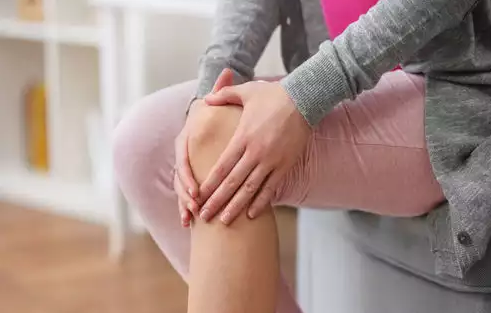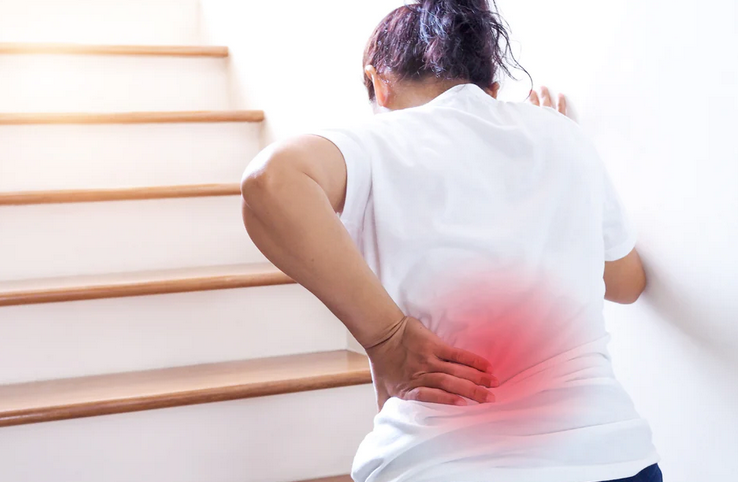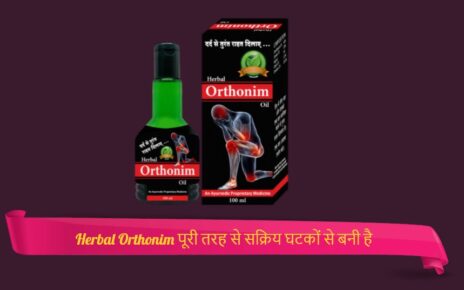Joint pain can be a significant hindrance to daily life, affecting people of all ages. Whether it's a result of an injury, medical condition, or simply wear and tear on the joints, finding effective ways to manage joint pain is crucial for maintaining overall well-being. In this article, we will explore the causes, symptoms, and treatment options for joint pain, as well as provide tips for managing and preventing it.
Introduction
Joint pain is a discomfort or soreness in any of the body's joints, which can include the knees, hips, shoulders, elbows, and wrists. It can range from mild to severe and may be accompanied by swelling, stiffness, or reduced mobility. Joint pain can have various underlying causes, including injuries, arthritis, bursitis, or other medical conditions.
Understanding Joint Pain
Definition of Joint Pain
Joint pain refers to the discomfort or inflammation that occurs in the joints of the body. It can affect a single joint or multiple joints simultaneously. The pain can be acute, lasting for a short period, or chronic, persisting for several weeks or longer.
Common Causes of Joint Pain
Joint pain can have numerous causes, including:
- Injury: Joint injuries, such as sprains or fractures, can lead to acute or chronic pain.
- Arthritis: Different forms of arthritis, such as osteoarthritis, rheumatoid arthritis, and gout, can cause joint pain.
- Bursitis: Inflammation of the fluid-filled sacs (bursae) that cushion the joints can result in pain and tenderness.
- Infection: Certain infections, such as septic arthritis, can lead to joint pain.
- Other conditions: Joint pain can also be associated with conditions like fibromyalgia, lupus, or tendonitis.
Types of Joint Pain
Understanding the specific type of joint pain can help in determining the most appropriate treatment approach. Here are some common types of joint pain:
Osteoarthritis
Osteoarthritis is the most prevalent form of arthritis and occurs due to the breakdown of joint cartilage over time. It commonly affects the knees, hips, and hands, causing pain, stiffness, and reduced flexibility.
Rheumatoid Arthritis
Rheumatoid arthritis is an autoimmune disease that primarily targets the joints. It causes inflammation, pain, swelling, and stiffness, often affecting multiple joints simultaneously. If left untreated, rheumatoid arthritis can lead to joint deformities and functional impairments.
Gout
Gout is a form of arthritis characterized by sudden and severe joint pain, usually affecting the big toe. It occurs due to the accumulation of uric acid crystals in the joints, resulting in inflammation and intense pain.
Bursitis
Bursitis occurs when the bursae, small fluid-filled sacs that cushion the joints, become inflamed. This can cause localized pain, tenderness, and swelling, commonly affecting the shoulders, elbows, or hips.
Symptoms and Diagnosis of Joint Pain
Common Symptoms
The symptoms of joint pain can vary depending on the underlying cause but often include:
- Pain, ranging from mild to severe
- Swelling and inflammation around the affected joint
- Stiffness, making it difficult to move the joint
- Reduced range of motion
- Warmth or redness in the joint area
- Muscle weakness or fatigue
Diagnostic Procedures
To diagnose the cause of joint pain, healthcare professionals may perform various diagnostic procedures, including:
- Physical examination: The doctor will assess the affected joint's range of motion, swelling, tenderness, and signs of inflammation.
- Medical history: Providing details about the onset, duration, and characteristics of the pain can assist in determining the cause.
- Imaging tests: X-rays, MRI scans, or ultrasound may be conducted to visualize the joints and identify any structural abnormalities or damage.
- Blood tests: These tests can help detect markers of inflammation, infection, or autoimmune conditions commonly associated with joint pain.
Treatment Options for Joint Pain
When it comes to managing joint pain, various treatment options are available, depending on the underlying cause and severity. It's important to consult with a healthcare professional to determine the most suitable approach for individual cases. Some common treatment options include:
Medications
- Pain relievers: Over-the-counter nonsteroidal anti-inflammatory drugs (NSAIDs), such as ibuprofen or naproxen, can help alleviate pain and reduce inflammation.
- Prescription medications: In more severe cases, the doctor may prescribe stronger pain medications or corticosteroids to manage inflammation and pain.
- Disease-modifying antirheumatic drugs (DMARDs): These medications are commonly used for rheumatoid arthritis and work to slow down the progression of the disease.
- Biologic agents: Biologic drugs, such as tumor necrosis factor (TNF) inhibitors, target specific components of the immune system to reduce inflammation in conditions like rheumatoid arthritis.
Physical Therapy
Physical therapy plays a crucial role in improving joint pain and restoring mobility. A physical therapist can design an individualized exercise program to strengthen the muscles around the affected joint, improve flexibility, and enhance overall joint function.
Lifestyle Changes
Making certain lifestyle modifications can help manage joint pain effectively:
- Weight management: Maintaining a healthy weight reduces stress on the joints, particularly in weight-bearing areas like the knees and hips.
- Exercise: Engaging in low-impact exercises, such as swimming or cycling, can help improve joint flexibility and strengthen supporting muscles without excessive strain.
- Joint protection: Using assistive devices, ergonomic tools, or modifying daily activities can minimize joint stress and reduce the risk of further damage.
- Balanced diet: Consuming a nutritious diet rich in fruits, vegetables, whole grains, and omega-3 fatty acids can promote joint health.
Alternative Therapies
In addition to traditional medical treatments, some individuals find relief from joint pain through alternative therapies. These may include:
- Acupuncture: This ancient Chinese practice involves inserting thin needles into specific points on the body to alleviate pain and promote healing.
- Massage therapy: Therapeutic massages can help relax muscles, improve circulation, and reduce tension around the joints, providing temporary pain relief.
- Herbal supplements: Certain herbal remedies, such as turmeric, ginger, and boswellia, are believed to possess anti-inflammatory properties and may help reduce joint pain.
- Topical treatments: Creams, gels, or patches containing analgesic or anti-inflammatory ingredients can be applied directly to the affected joint for localized relief.
Managing Joint Pain at Home
Alongside medical treatments and therapies, there are several strategies individuals can employ to manage joint pain at home. These include:
Exercise and Stretching
Regular exercise is essential for joint health and pain management. Low-impact activities like swimming, walking, or yoga can help improve joint flexibility, strengthen muscles, and reduce pain. Additionally, specific stretching exercises targeting the affected joints can alleviate stiffness and increase mobility.
Healthy Diet and Weight Management
Maintaining a healthy diet and weight can significantly impact joint health. A balanced diet rich in fruits, vegetables, lean proteins, and whole grains provides essential nutrients for joint function. Additionally, maintaining a healthy weight reduces the strain on joints, especially weight-bearing ones like the knees and hips.
Hot and Cold Therapy
Applying heat or cold to the affected joint can help alleviate pain and reduce inflammation. Heat therapy, such as warm compresses or heating pads, relaxes muscles and improves blood circulation. Cold therapy, on the other hand, helps numb the area, reduce swelling, and temporarily alleviate pain. It's important to use heat or cold therapy as directed by a healthcare professional and avoid applying extreme temperatures directly to the skin.
Rest and Relaxation Techniques
Allowing the affected joints adequate rest is crucial for managing joint pain. Balancing activity with periods of rest helps prevent overexertion and reduces stress on the joints. Incorporating relaxation techniques like deep breathing exercises, meditation, or gentle yoga can also help relax the mind and body, promoting overall well-being.
Preventing Joint Pain
While joint pain may not always be entirely preventable, certain measures can reduce the risk and severity of joint-related issues. Here are some preventive strategies:
Maintaining a Healthy Lifestyle
Adopting a healthy lifestyle can significantly contribute to joint health. This includes:
- Engaging in regular physical activity to strengthen muscles and maintain joint flexibility.
- Following a balanced diet that provides essential nutrients for joint function.
- Getting sufficient rest and quality sleep to allow the body to repair and regenerate.
- Avoiding or moderating activities that put excessive strain on the joints, such as repetitive high-impact exercises or heavy lifting.
Protecting Joints
Taking steps to protect joints from injuries is essential. This includes:
- Using protective gear, such as knee pads or wrist guards, when engaging in high-risk activities.
- Practicing proper posture and body mechanics to avoid unnecessary stress on joints.
- Using ergonomic equipment and tools that minimize joint strain during daily tasks.
Injury Prevention
Accidents and injuries can lead to joint pain. To prevent such incidents:
- Ensure proper safety measures are in place, such as handrails on stairs or non-slip mats in slippery areas.
- Practice caution during physical activities or sports by wearing appropriate protective equipment and using proper techniques.
- Take breaks and rest when participating in repetitive or strenuous activities to prevent overuse injuries.
When to Seek Medical Help
While many cases of joint pain can be managed with self-care and home remedies, there are instances when it is essential to seek medical assistance. Consult a healthcare professional if:
- Joint pain is severe, persistent, or worsening over time.
- There is significant swelling, redness, or warmth around the affected joint.
- The joint is deformed or visibly injured.
- There is difficulty in performing daily activities or a significant impact on quality of life.
- Joint pain is accompanied by other concerning symptoms, such as fever, unexplained weight loss, or fatigue.
A healthcare provider can conduct a thorough evaluation, perform diagnostic tests if necessary, and recommend appropriate treatment options based on the underlying cause of the joint pain.

Conclusion
Joint pain can significantly impact daily life, but with proper understanding and management, it is possible to alleviate discomfort and improve overall joint health. By adopting a multifaceted approach that includes medical treatments, lifestyle modifications, and self-care strategies, individuals can find relief and maintain optimal joint function. Remember to consult a healthcare professional for an accurate diagnosis and personalized treatment plan.


